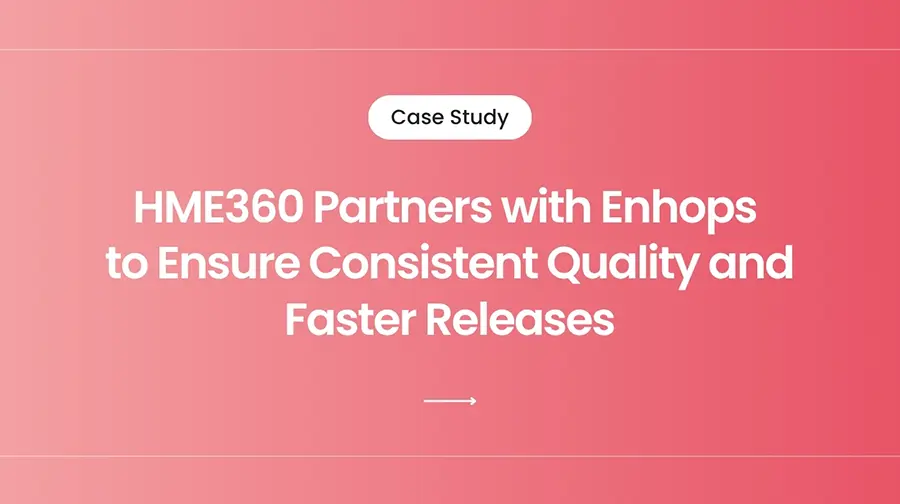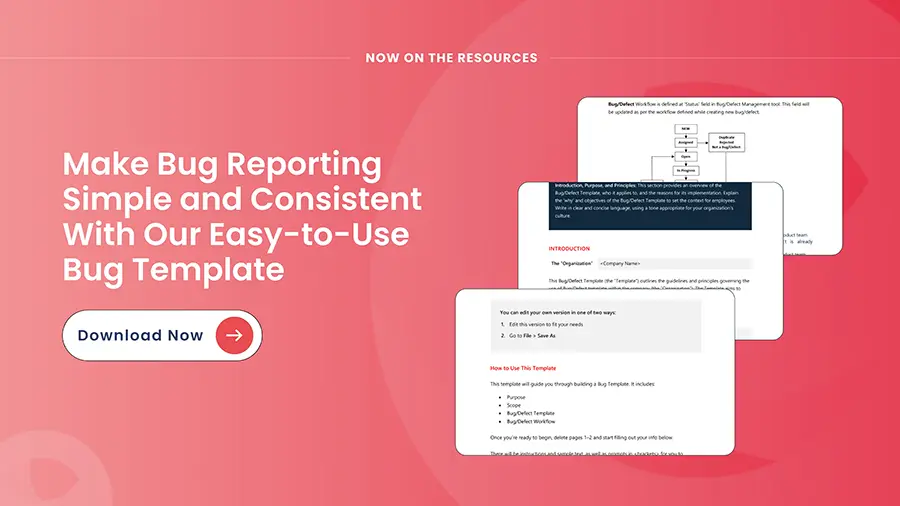Robotic Process Automation (RPA) is not merely a buzzword; it’s a transformative technology that holds the potential to revolutionize the approach to automation in enterprises. The need for RPA in enterprise test automation becomes evident in today’s business landscape, marked by rapid technological advancements and evolving customer demands. The one area where RPA is making serious strides are in the space of software testing and quality assurance. Traditional test automation, while effective in specific scenarios, often falls short due to manual efforts when confronted with the complexities of modern systems and dynamic interfaces.
In this tech-centric expose, we will delve into the contemporary state of testing and validation in the enterprise, examine how Robotic Process Automation (RPA) emerges as the natural successor in test automation, and dissect how RPA based testing tools adeptly tackle long-standing challenges.
The Current State of Testing and Validation in Enterprises
Before we plunge into the world of RPA, it’s essential to recognize the hurdles that traditional test automation faces in our fast-evolving business landscape. The conventional tools and methodologies, while effective, often stumble when confronted with keeping up pace with modern software development lifecycle and releases. . Being static and inflexible, they struggle to keep pace with the ever-changing dynamics of modern enterprises.
In recent years, a significant trend has emerged among CXOs, influenced by advice from industry experts and analysts, to embrace the concept of extreme or hyper automation. This advice is strongly supported by the industry success stories and fantastic results. Companies are actively incorporating various tools, open-source technologies, and developing enterprise test automation frameworks powered by RPA technologies.
The Role of RPA in Enterprise Test Automation
What if the reliance on multiple testing tools could be eliminated altogether? But how to How about seamlessly integrating continuous testing platforms, and boosting the overall efficiency of continuous integration and continuous deployment (CI/CD) processes?
This is where Robotic Process Automation (RPA) steps into the realm of testing. While not originally designed for testing, RPA tools exhibit significant potential to enhance testing productivity, efficiency, and accelerate the delivery of features to the market, providing a distinct advantage over traditional testing tools.
RPA’s unique capabilities make it a natural fit for test automation. It can be deployed to automate end-to-end testing, encompassing complex business processes that involve multiple systems, interfaces, and applications. With RPA, organizations can achieve a comprehensive testing approach that spans user interactions, data validation, and system integration, all while maintaining speed, accuracy, and consistency.
In a landscape where businesses strive for extreme automation and streamlined processes, RPA is the missing piece in the puzzle of enterprise test automation, offering a transformative solution to the challenges posed by traditional testing methods. Its adaptability, efficiency, and the ability to eliminate the need for multiple disparate tools make it a game-changing addition to the arsenal of modern enterprises, poised to deliver quality and innovation at an unprecedented pace.
How RPA Streamlines Test Automation
The integration of Robotic Process Automation (RPA) into test automation introduces a paradigm shift that transcends the boundaries of traditional testing methodologies. RPA’s potential in streamlining the testing process lies in its ability to not only automate individual test cases but to encompass entire business processes.
Unlike traditional test automation, which often focuses on specific tasks and test cases, RPA-based testing has the capacity to simulate end-to-end testing scenarios. This means it can mimic the entire flow of an operation, from the initial user interaction to the validation of data, system responses, and integrations with other applications. In essence, RPA-based testing replicates the entire user journey, ensuring that the software functions seamlessly in a real-world context.
Discussing the Automation of End-to-End Testing
RPA’s prowess in automating end-to-end testing is a game-changer. Consider a scenario in which a user interacts with a web application to perform a series of tasks, including filling out forms, making selections, and validating results. In a traditional testing approach, automating this process requires creating complex scripts for each action, often leading to long and convoluted test cases.
RPA simplifies this. It can be configured to mimic the user’s actions within the application, navigating through the entire process seamlessly. This approach not only simplifies test case creation but also ensures that the testing process is more realistic, mirroring the user’s actual experience. It allows for more comprehensive and accurate testing, reducing the chances of missing critical defects.
Potential Benefits of RPA-Based Testing
The benefits of RPA-based testing are manifold and far-reaching:
- Reduced Costs: By automating the testing process, RPA eliminates the need for manual intervention in repetitive tasks. This translates into significant cost savings over time, as manual testing can be labor-intensive and costly.
- Improved Testing Efficiency: RPA operates with unwavering precision, executing tests with consistency and accuracy. This leads to faster testing cycles and quicker identification of defects, ultimately expediting the software development lifecycle.
- Enhanced Accuracy: RPA-based testing minimizes human errors, which can often occur during manual testing. The results are more reliable, and the risk of false negatives or false positives is significantly reduced.
- Scalability: RPA can efficiently handle multiple tasks, allowing simultaneous testing of multiple scenarios, configurations, and devices. This scalability ensures that testing remains effective as the scope of your software grows.
Discussing Tools and Platforms for RPA-Based Testing
RPA-based testing relies on a range of tools and platforms that empower organizations to automate their testing processes effectively. Some of the prominent RPA tools for testing include:
- UiPath: Known for its user-friendly interface and a wide range of activities, UiPath offers a comprehensive solution for RPA-based testing. It provides automation capabilities for both web and desktop applications.
- Blue Prism: Blue Prism is renowned for its scalability and flexibility, making it a robust choice for automating test cases and business processes. It offers a digital workforce for seamless test automation.
- Automation Anywhere: Automation Anywhere is highly adaptable, catering to a variety of testing scenarios. It includes features for recording, automating, and managing test cases efficiently.
- Selenium: While Selenium is primarily recognized for web automation, it can be combined with RPA tools to enhance test automation capabilities. It’s open-source and widely used in the industry.
- AppRobotic: AppRobotic is designed specifically for RPA-based testing and offers an extensive library of pre-built test cases and integrations with various applications.
How RPA Based Testing Tools Address Traditional Test Automation Challenges
We are now embarking on a journey to unravel the age-old challenges witnessed in the software testing domain and how distinct RPA testing tools overcome these challenges smoothly. The following table showcases the core challenges, and the RPA testing tools that serve as their antidote:
| Challenges | Solutions | RPA Testing Tool |
| Scalability | RPA testing tools exhibit seamless scalability, enabling them to seamlessly accommodate burgeoning volumes of test cases and scenarios, thereby ensuring that the testing phase keeps stride with agile development cycles. | UiPath, Blue Prism, Automation Anywhere |
| Cost-Efficiency | Automation ushers in a sea change by mitigating overall testing expenditure and resource prerequisites, endowing organizations with an elevated return on investment. | Katalon Studio, TestProject, mabl |
| Enhanced Accuracy | RPA ushers in an era of immaculate testing outcomes by banishing the specter of human errors from repetitive tasks, ensuring that the testing results exhibit unparalleled precision and reliability. | WorkFusion, Tricentis, Eggplant |
| Integration Prowess | RPA demonstrates its affinity for harmonious integration by seamlessly embedding within existing systems and applications, facilitating the alignment with an organization’s unique testing requisites. | Pega, Appian, Redwood Software |
| Velocity and Efficiency | RPA testing tools are champions of expeditious testing, outrunning the plodding pace of manual testing and thereby curtailing the time spent on testing cycles. | Automation Anywhere, UiPath, Blue Prism |
Does RPA based Testing Replace Test Automation?
While RPA wields the power to remarkably expedite the testing process, it is imperative to discern that it doesn’t supplant conventional test automation. RPA is inherently designed to automate routine tasks within testing, while traditional test automation tools are engineered to tackle multifaceted and intricate testing scenarios. The future portends a fusion of RPA with conventional test automation tools, fostering a synergy that marries speed with meticulous testing.
The future of automation in RPA, enterprise automation, and test automation portends a revolution. These technologies shall acquire an enhanced intellect, adaptability, and seamless integration, elevating business operations into a realm of efficiency and competitiveness that was previously unattainable. While RPA and test automation serve divergent purposes, they are destined to coalesce, ushering in a new era of software quality and delivery.
Contact us to see how utilizing RPA based testing can help in improving the overall quality of your software testing processes?




